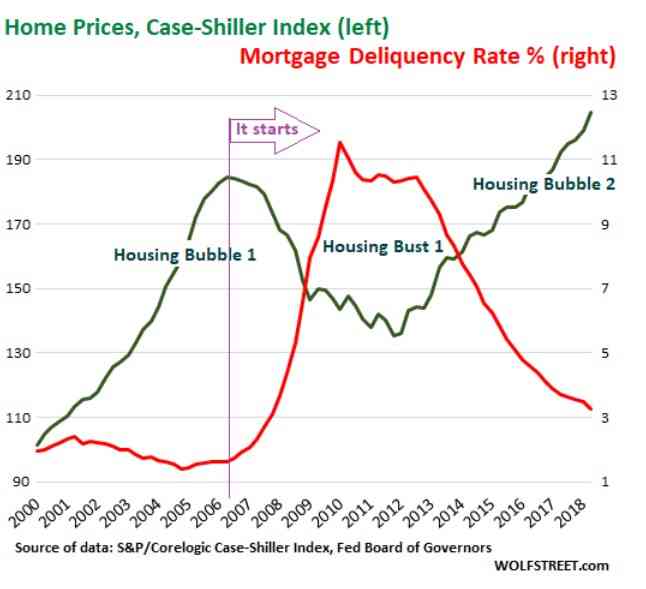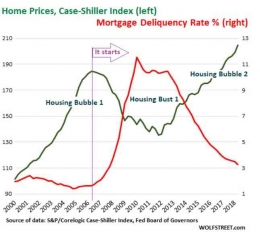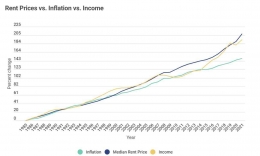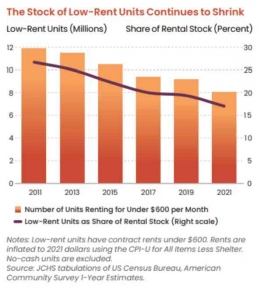“I believe there’s a huge difference between housing as a commodity and gold as a commodity. Gold is not a human right, housing is,”
says Leilani Farha, a former Special Rapporteur appearing in the documentary film, ‘PUSH’.
Have you ever wondered why people kept complaining about not being able to afford a home? The housing crisis has long been acknowledged as a major issue by people worldwide, yet it still exists, even worsened. A popular scapegoat being held accountable for the severity of this issue is large property investors feeding on the current paradigm prevailing in the housing market, which is the financialization of housing.
Housing financialization has been described as treating housing as a commodity to generate profits rather than social goods that bear the importance of fulfilling the human need for shelter. Then one question concluded, how did this idea become popular in the first place? Several studies trace the mainstreaming of this concept back to the housing boom and the Great Recession of the United States.
Where It All Started
During the 1990s, the US began an expansion in home mortgage borrowing, which made it easier for households to acquire housing credit. During this period, mortgage debt went through securitization, repackaging those mortgages into bond-like investments that are no longer at risk of being unpaid if the homeowner defaults. This process resulted in products such as mortgage-backed securities (MBS) and collateralized debt obligations (CDOs), marking the shift from viewing housing as a place to build a home to viewing them as a financial asset that could be traded easily (Federal Deposit Insurance Corporation, 2023).
With securitization, lenders are now more loosely selective with their lending, giving them to many under-qualified borrowers. Big investors would also come into play when the MBS and CDOs are equipped with higher interest rates and yield greater returns. All in all, as long as house prices are increasing, the housing market is highly profitable.

However, in Figure 1, we can see that home prices started to decrease while mortgage interest rates were high. Many homeowners would then default as indicated in the mortgage delinquency rate, and can no longer use the profit from selling their house to acquire a new one. The US housing bubble burst and triggered an economic shock to other countries, creating a Global Financial Crisis (GFC) that would stimulate instability in housing markets and a decline in house constructions globally.
How GFC Shaped Today’s Realities
The GFC had led to a high number of foreclosures due to people not being able to pay their mortgages, therefore selling their houses. According to Realtytrac, about 2.82 million and 2.87 million foreclosures occurred in the US in 2009 and 2010 respectively. In Spain, 500.000 foreclosures occurred, resulting in over 300.000 evictions between 2008 and 2013 (Leijten & de Bel, 2020). Taking the opportunity, big investors would buy those foreclosed houses cheaply and sell them at a higher price when the economy stabilized. Even globally, this further strengthened the trend of housing as an investment until today, where big corporations or institutions buy bulk houses at a low cost, revamping them, and offering them to the market at much higher rent. An example of this is how, between September 2021 and March 2023, Blackstone—the largest real estate investor in the world—raised the rent prices of an apartment complex in San Diego by 43 and 64 percent, while the California state law only allows an annual rent hike of 10 percent or less. Another example is in Ireland, where financial investors are estimated to increase their rents 4.1 percent higher than other landlords. These two examples demonstrate how it is easier for large property investors to charge an unreasonable amount of rent towards its tenants, even when the rise in rent is not accompanied by a proportionate increase in income.

Ever-Increasing Rent or Unbearable Building Cost?
If renting makes them inferior and only causes loss, why not build a home of their own to be free from the ‘evil’ corporate landlords? Simply, because it is costly to build a new house. Ever since the GFC, the construction industry went into a downward spiral, causing construction companies to be more cautious with their procurement of housing. Furthermore, the cost to build a house is also on the rise due to the expensive cost of building materials. Supply chain disruptions such as the Russia-Ukraine war also worsened the issue, resulting in a construction labor shortage across European countries and an increasing price in building materials like steel globally.

With fewer houses being built and the cost of building a home soars, the market supply of houses cannot meet the demand. As the fundamental economic theory says, when supply is less than demand, the price went sky-high. Then, if houses are scarce, isn’t it good to let corporate investors thrive in the market to increase the supply?
There Are Homes, but Why Are They Empty?
The common argument to support corporate investors is because housing construction costs are high, wealthy investors are able to provide more houses that would not have been built unless they got involved in the market. Though they do add more housing supply, the argument misses the part where driven financial actors, like large corporate investors, respond to global capital rather than local housing needs, hence they are more likely to invest in expensive luxury housing than housing for low-middle income households (Leijten & de Bel, 2020). One of the reasons is because luxury housing grants them a higher profit margin. This trend is echoed by the figures in Figure 4, where we can see that with the example of 2018, 87 percent of all large-scale apartment buildings completed in the first half of 2018 in the US are high-end.

Another report from Harvard’s Joint Center for Housing Studies in 2023 also supports the claim, whereby US multi-family rental construction are at a decades-long peak, the high rent being charged make them unaffordable to many households. As can be seen from Figure 5, the report also shows that from 2011 to 2021, the trend for stock of low-rent units has been declining consistently, indicating that the aforementioned peak in rental construction does not cater to the low-income market.

These findings highlight how vulnerable groups like low-income communities are at the risk of being denied their basic rights to have a shelter while wealthy investors are racing to fill up their bags with the rent profits earned from their high-end housing investments.
Should the Government Subsidize Housing Procurement?
Although we have discussed how large property investors devour the idea of housing financialization, it is only rational for investors to be profit-driven. Therefore, today governments are implementing policies in an effort to combat the housing unaffordability that is exacerbated by housing financialization. One of the policies applied in the US are Low Income Housing Tax Credit (LIHTC), where the government would subsidize the construction of low-income housing. Now we raise the question, does publicly provided and subsidized low-income housing actually increase the stock of housing?
A research by Sinai and Waldfogel (2002) found that government programs do enlarge the total stock of housing and reduce rent prices, despite not being on a one-for-one basis. For every three units of government subsidized housing, there are two units less of housing that would have been provided by private markets. This is also proven in the implementation of LIHTC policy according to the research conducted by Eriksen & Rosenthal (2010) as can be seen in Figure 6. H3-H2 represents unsubsidized private construction that is “crowded out” by the LIHTC program, resulting in H2-H1 increase in housing stocks rather than H3-H1.

The research suggests that due to the substantial displacement of private rental housing construction as a result of the LIHTC program, low-income provided government housing should consider being built in a location where low-moderate rental housing opportunities are less found, such as in a middle to higher income neighborhood. Because there are no competitions, the crowding out effect could be minimized.
Housing financialization has created an environment in the housing market that favors the wealthy at the expense of the low and poor. Governments around the world should increase their supervision and efforts to make sure its people have a roof over their head, because a home is not an investment, it is a right.
Ranadya Ainaya Putri | Ilmu Ekonomi 2022 | Vice Manager Divisi Kajian KANOPI FEB UI 2024/2025
References
Abraham, R. (2023, March 31). Tenants of America's Biggest Landlord Form Union to Fight Evictions, Rent Hikes. VICE. https://www.vice.com/en/article/epvdzw/blackstone-tenants-union-san-diego-evictions-rent
Abraham, R. (2023, March 31). Tenants of America's Biggest Landlord Form Union to Fight Evictions, Rent Hikes. VICE. https://www.vice.com/en/article/epvdzw/blackstone-tenants-union-san-diego-evictions-rent
Abraham, R. (2023, October 11). Millions of Homes Still Being Kept Vacant as Housing Costs Surge, Report Finds. VICE. https://www.vice.com/en/article/pkam9v/millions-of-homes-still-being-kept-vacant-as-housing-costs-surge-report-finds
Ash, J. (2023). BLACKSTONE COMES TO COLLECT: How America’s Largest Landlord and Wall Street’s Highest Paid CEO Are Jacking Up Rents and Ramping Up Evictions. Public Equity Stakeholder Project.
Boyle, M. J. (2023). What Role Did Securitization Play in the Global Financial Crisis? Investopedia. https://www.investopedia.com/ask/answers/041515/what-role-did-securitization-play-us-subprime-mortgage-crisis.asp
Carlyle, E. (2015). 2014 Foreclosure Filings Hit Lowest Level Since 2006, RealtyTrac Says. Forbes. https://www.forbes.com/sites/erincarlyle/2015/01/15/foreclosure-filings-drop-by-18-in-2014-hit-lowest-level-since-2006-realtytrac-says/?sh=11a341d448e5
Coates, B., & Moloney, J. (2024, March 8). Let's not kid ourselves that private investors or super funds will build the social housing we need. The Conversation. https://theconversation.com/lets-not-kid-ourselves-that-private-investors-or-super-funds-will-build-the-social-housing-we-need-224635
Eriksen, M. D., & Rosenthal, S. S. (2010). Crowd out effects of place-based subsidized rental housing: New evidence from the LIHTC program. Journal of Public Economics, 94(11-12). https://doi.org/10.1016/j.jpubeco.2010.07.002
Federal Deposit Insurance Corporation. (2023). Crisis and Response: An FDIC History, 2008–2013.
Hoff, M. (2020, August 31). Chart Showing New Housing Construction Starts Since 1990. Business Insider. https://www.businessinsider.com/chart-showing-historical-housing-starts-2020-8
Joint Center for Housing Studies of Harvard University. (2023). The State of the Nation's Housing 2023.
Leijten, I., & de Bel, K. (2020). Facing financialization in the housing sector: A human right to adequate housing for all. Netherlands Quarterly of Human Rights, 38(2).
Office of the United Nations High Commissioner for Human Rights. (n.d.). Financialization of housing | OHCHR. ohchr. https://www.ohchr.org/en/special-procedures/sr-housing/financialization-housing
Perucca, J. (2023, September 13). Green Housing Threatens Affordability. But It Doesn't Have To. Green European Journal. https://www.greeneuropeanjournal.eu/green-housing-threatens-affordability-but-it-doesnt-have-to/
Rasure, E. (2023). Foreclosure Crisis: Meaning, History, and Resolution. Investopedia. https://www.investopedia.com/terms/f/foreclosure-crisis.asp#citation-5
Richardson, B. (2022). 16 Million Homes Are Lying Empty And These States Are The Vacancy Hot Spots. Forbes. https://www.forbes.com/sites/brendarichardson/2022/03/07/16-million-homes-lie-empty-and-these-states-are-the-vacancy-hot-spots/?sh=52d1fe3827c1
Richter, W. (2018, September 16). What Can Cause the Next Mortgage Crisis in the US? Wolf Street. https://wolfstreet.com/2018/09/16/what-can-cause-the-next-mortgage-crisis-in-the-us/
Serrano, X. (2023, June 23). RENT PRICES VS. INFLATION AND INCOME GROWTH. Rent Prices vs. Inflation and Income Growth. https://nowbam.com/rent-prices-vs-inflation-and-income-growth/
Spence, E., Pohjanpalo, K., & Brambilla, A. (2022, April 1). Wartime Steel Spike Threatens to Hobble Global Economic Recovery. Bloomberg. https://www.bloomberg.com/news/articles/2022-04-01/war-means-surging-steel-prices-and-unfinished-infrastructure
Statista. (2020, November 6). Share of luxury apartments built U.S. 2012-2018. Statista. https://www.statista.com/statistics/944168/share-luxury-apartments-built-usa/
Still recovering from global financial crisis, construction faces ongoing setbacks. (2022, December 15). RSM US. https://rsmus.com/insights/industries/construction/recovering-from-global-financial-crisis-construction-faces-setbacks.html
van Sparrentak, K., & Urtasun, E. (2022, February 27). Who owns your city: how corporate landlords make money with your home. Greens/EFA. https://www.greens-efa.eu/opinions/who-really-owns-your-city/
Vyas, N. N., & Warren, M. (2020). From Commodities To Communities: Reimagining Housing After The Pandemic. UCLA Law Review. https://www.uclalawreview.org/from-commodities-to-communities-reimagining-housing-after-the-pandemic/
Waters, C. (2023, February 21). How Wall Street bought single-family homes and put them up for rent. CNBC. https://www.cnbc.com/2023/02/21/how-wall-street-bought-single-family-homes-and-put-them-up-for-rent.html
Weinberg, J. (2013). The Great Recession and Its Aftermath. Federal Reserve History. https://www.federalreservehistory.org/essays/great-recession-and-its-aftermath
Westenhawer, D. (2022). It’s Easy To Blame Private Equity For Housing Shortage, But Crisis Has Deeper Roots. Forbes. https://www.forbes.com/sites/davidwestenhaver/2022/06/28/its-easy-to-blame-private-equity-for-housing-shortage-but-crisis-has-deeper-roots/?sh=9bbf32f4616a

















